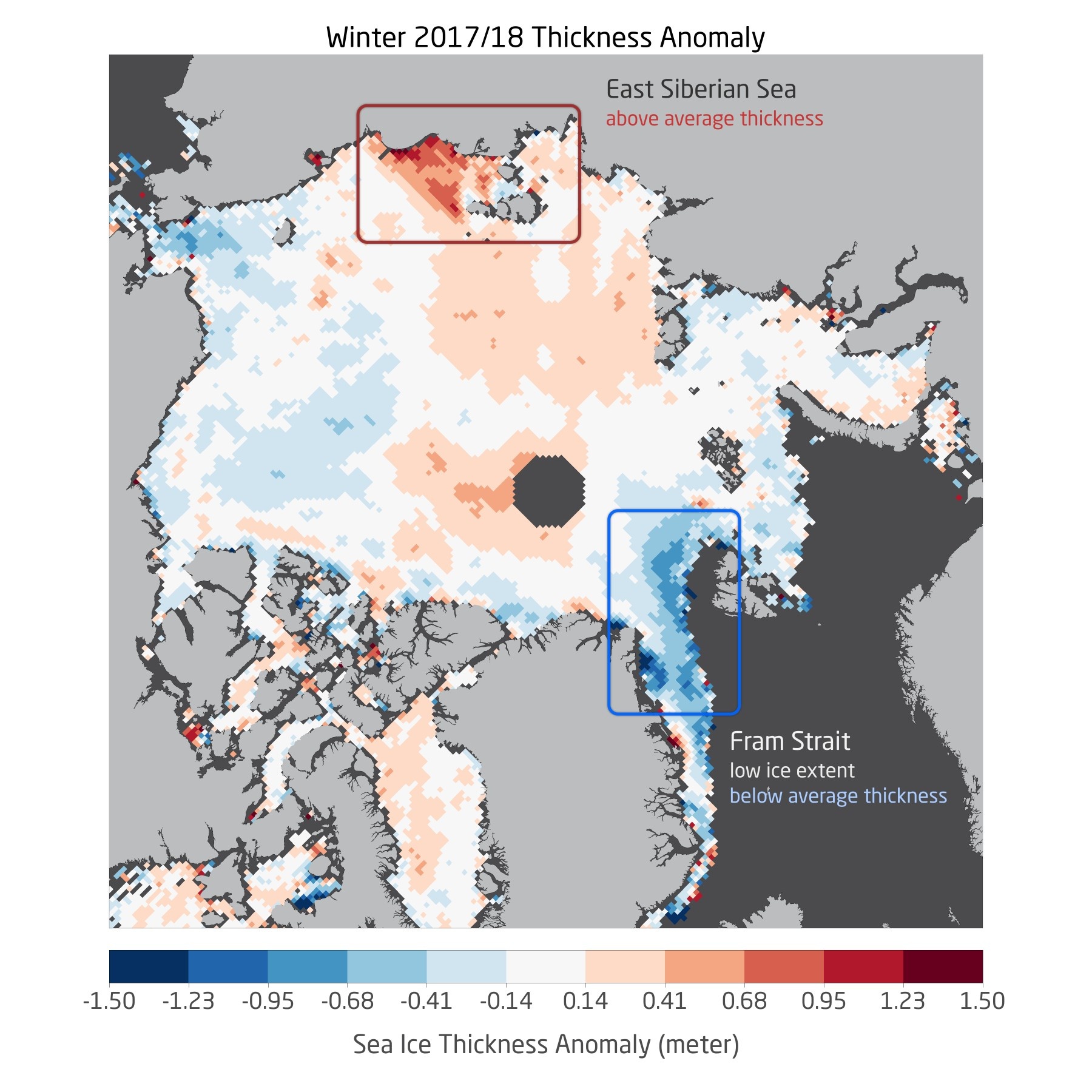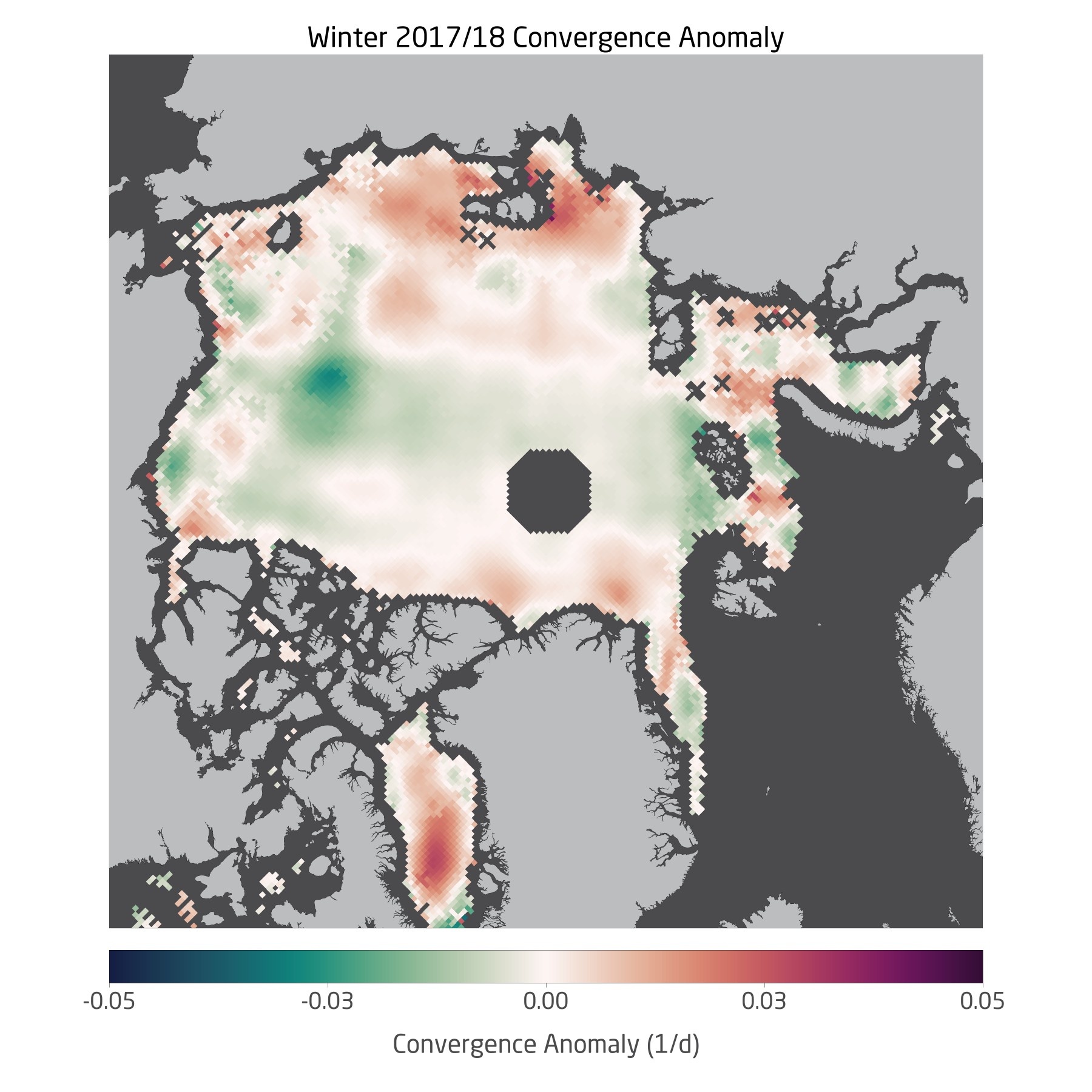The latest results from CryoSat show that the latest extrema in winter sea ice maximum extent are not necessarily accompanied by a lower mean sea ice thickness of the remaining ice. One factor certainly is that sea ice thickness is a product of thermodynamic ice growth and the acummulated dynamic forces throughout the winter. As a first step in the investigation to what extent dynamic forces have played a role in the last winter, we compare winter mean anomalies of sea ice thickness and ice convergence derived from OSI-SAF data (figures below).
Visual inspection shows that there are two regions where above-average ice convergence and thickness seem to be correlated:
- East Siberian Sea
- Baffin Bay
It must be kept in mind that the convergence anomaly only shows which regions had higher rates of compression. In addition, the analysis is based on monthly mean convergence/divergence estimates, which might not provide an accurate representation on individual events. But the visual comparison can be a starting point for a more detailed physical analysis.
The winter mean thickness anomaly also indicates that regions that had anomalous low sea ice extent this winter (Fram Strait, Bering Sea) also have a negative ice thickness anomaly.

